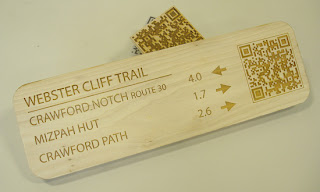walker
New member
- Joined
- Sep 19, 2003
- Messages
- 206
- Reaction score
- 39
I just read on the AMC's Equipment Blog (Appalachian Mountain Club's Equipped) about the use of QR Codes (those funny looking square bar codes you use with your smart phone) on trail signs. Come up to the trail sign with a QR code, whip out your smart phone, and get information about the trail and other important data the trail sponsor includes on the web site. COOL??? I think NOT!!!

1) You have to be in an area that has cell coverage.
2) I like to hike to get away from technology. Almost. I carry a cell phone for emergency use (when available) & a GPS (for safety reasons).
3) If you get to the trail sign and need a smart phone to get trail information, YOU ARE NOT PREPARED!!! You should have all the trail info before your boots ever hit the ground.
Maybe I'm old school, but (IMHO) QR Codes and trail sign just don't mix.
See you on the trail.....(with my map and compass ).....Walker
).....Walker

1) You have to be in an area that has cell coverage.
2) I like to hike to get away from technology. Almost. I carry a cell phone for emergency use (when available) & a GPS (for safety reasons).
3) If you get to the trail sign and need a smart phone to get trail information, YOU ARE NOT PREPARED!!! You should have all the trail info before your boots ever hit the ground.
Maybe I'm old school, but (IMHO) QR Codes and trail sign just don't mix.
See you on the trail.....(with my map and compass
Last edited:
